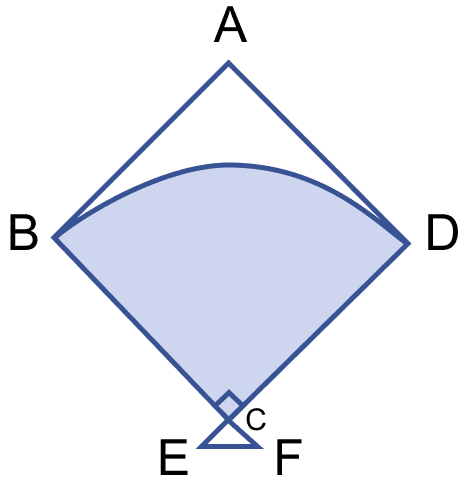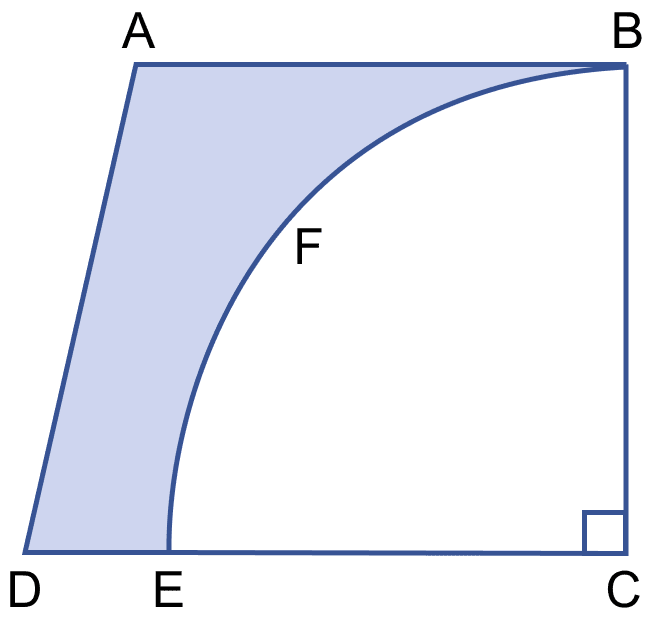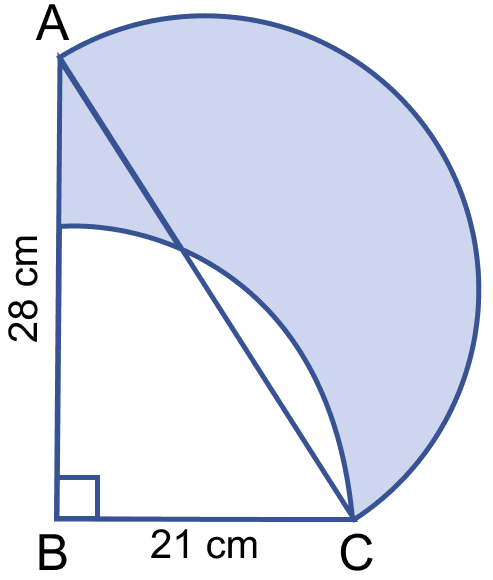Mathematics
In the figure (i) given below, the boundary of the shaded region in the given diagram consists of four semicircular arcs, the smallest two being equal. If the diameter of the largest is 14 cm and of the smallest is 3.5 cm, calculate
(i) the length of the boundary.
(ii) the area of the shaded region.

Mensuration
17 Likes
Answer
(i) From figure,

OA = = 7 cm.
OB = OA - AB = 7 - 3.5 = 3.5 cm.
Radius of smallest semi-circle = = 1.75 cm.
Circumference of semi-circle = πr.
Length of boundary = Circumference of largest semi-circle + Circumference of smaller semi-circle + 2 × Circumference of smallest semi-circle
= 7π + 3.5π + (2 x 1.75π)
= 7π + 3.5π + 3.5π
= 14π
=
= 2 × 22
= 44 cm.
Hence, length of boundary = 44 cm.
(ii) Area of shaded region = Area of large semi-circle + Area of smaller semi-circle - 2 × Area of smallest semi-circle
Hence, area of shaded region = 86.625 cm2.
Answered By
11 Likes
Related Questions
In the figure (i) given below, ABCD is a rectangle. AB = 14 cm, BC = 7 cm. From the rectangle, a quarter circle BFEC and a semicircle DGE are removed. Calculate the area of the remaining piece of the rectangle.

The figure (ii) given below shows a kite, in which BCD is in the shape of a quadrant of a circle of radius 42 cm. ABCD is a square and △CEF is an isosceles right angled triangle whose equal sides are 6 cm long. Find the area of the shaded region.

In the figure (ii) given below, a piece of cardboard, in the shape of a trapezium ABCD and AB || CD and ∠BCD = 90°, quarter circle BFEC is removed. Given AB = BC = 3.5 cm and DE = 2 cm. Calculate the area of the remaining piece of the cardboard.

In the figure (i) given below, ABC is a right angled triangle, ∠B = 90°, AB = 28 cm and BC = 21 cm. With AC as diameter a semi-circle is drawn and with BC as radius a quarter circle is drawn. Find the area of the shaded region correct to two decimal places.
